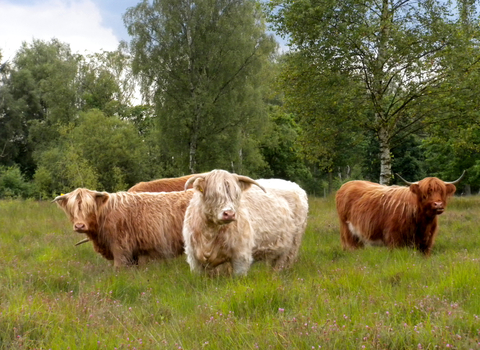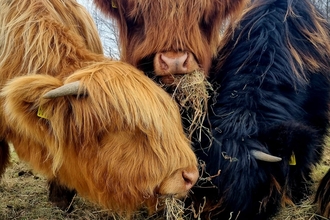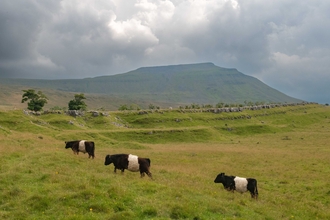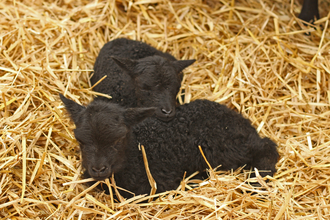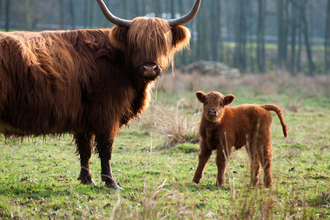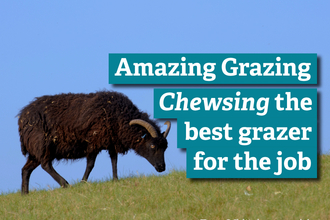Our grazing work
Many areas of land we see as natural have, over centuries, been created by the actions of grazing
animals. Before humans intervened it is likely that Yorkshire was a patchwork of woodland, grassland and wetland; the diversity created by natural events and the impacts of native animals, including wild
cattle, horses, pigs and others.
Sadly, many of these native grazers have long since disappeared from the landscape and today, we do our best to mimic this natural management by using domesticated grazing animals. This ensures
we can keep a mosaic of different habitats, similar to what would have occurred naturally. The great thing about cattle, sheep and ponies is that, unlike machinery, they’re all-terrain 4x4s – and they don’t
need man power to operate!
The wildlife benefits of grazing
The Trust own a variety of different cattle – Highlands, belted Galloways, beef shorthorn and some crosses. Our work is also supported by external graziers, farmers who use cattle like dexters. Cattle leave a very mixed landscape behind as aresult of the way they graze – with some long areas of grass, some trampled areas, some grazed short and some entirely bare, where seeds can germinate.
Chewing: Cows use their muscular tongues to pull out plants whole, leaving space for wildflowers to push through. Patches of long grass left behind provide tussocky structure, an ideal place for ground-nesting birds, and mammals, such as field voles.
Pooing: Dung is really important for our grasslands – and not just because it’s fertiliser! Poo is actually a habitat in its own right, capable of supporting over 250 different insect and invertebrate species – an essential food source for threatened species such as swifts, hedgehogs and bats.
Mooo-ving: Our bulky highland cattle trample patches of grass. As they slowly wander around, they disturb plants species we don’t want, stopping them from taking over. You can see this in action at Spurn Point.
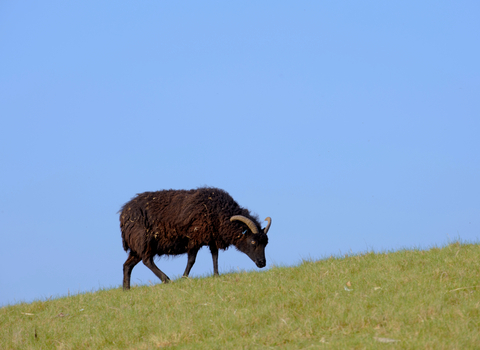
It isn't just cows!
We employ around 600 Hebridean sheep - the biggest flock in the country! Hebrideans have definitely made a come-back- in 1973, there were only 300 in the whole country .
These baa-rilliant grazers like to eat plants which are very low in nutritional value - like sedge, the celery of the sheep world- and, happily, these are exactly the species we want to remove from our grasslands.
Sheep are often used when shorter grass is needed for delicate wildflowers to bloom or for birds to nest and feed on, as they bite near to the ground. Our ponies are similar, although they are fussier eaters and can stay out all winter!
Discover our Grazing work
Our amazing grazers are managed by our grazing team, Beth and Angus, who do everything from ferrying them between reserves to checking on them throughout the year, organising vet checks, lambing, shearing and more – with help from their colleagues and some fantastic volunteers.
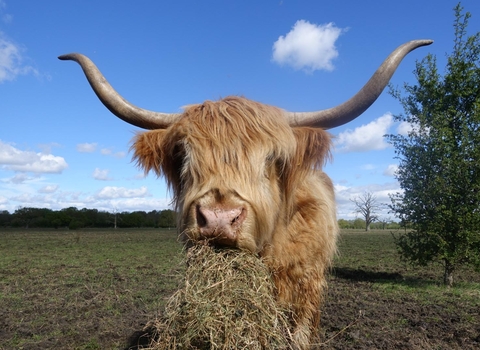
(c) Savannah Witham
Where to spot...
Are you a huge Highland cow fan – or perhaps you’re curious to watch our Hebridean sheep at work? Spurn, Stirley, Staveley and Potteric Carr are generally good reserves to spot our grazers.
If you are visiting our nature reserves to see our amazing grazers, please stay behind the fence and enjoy from a distance so as not to disturb them. Our livestock also have a good natural diet, so please don’t feed them anything extra – even at Christmas!

